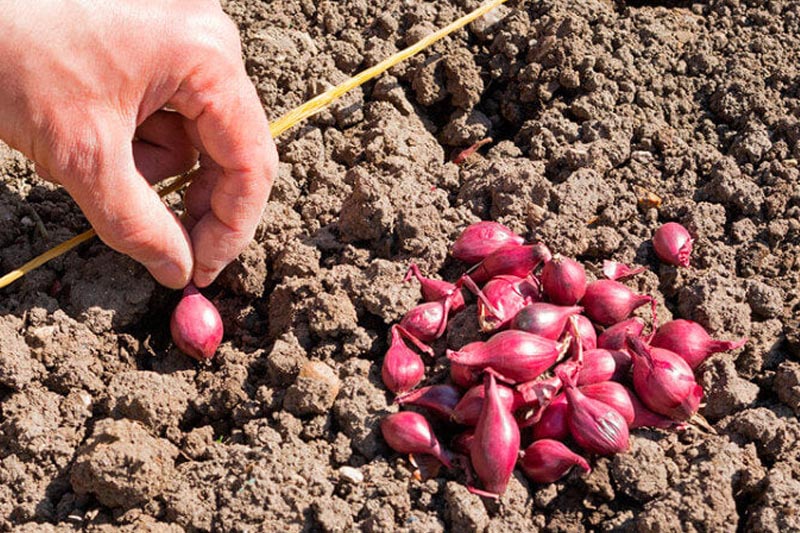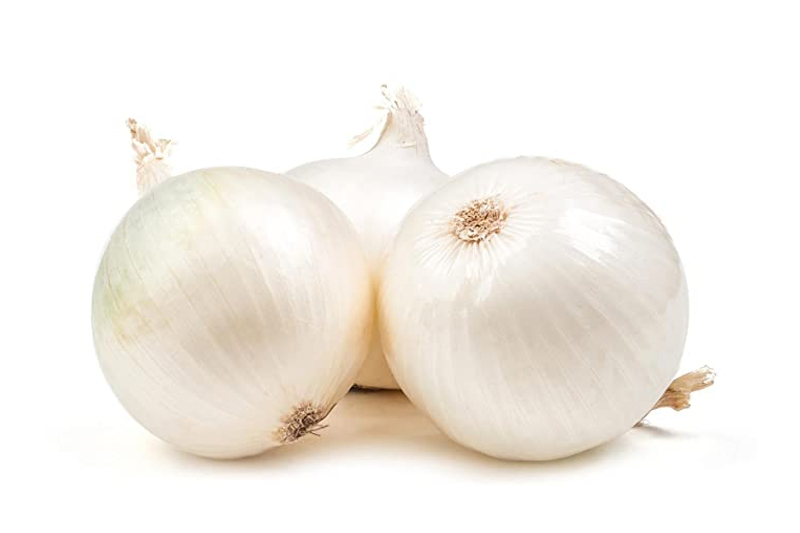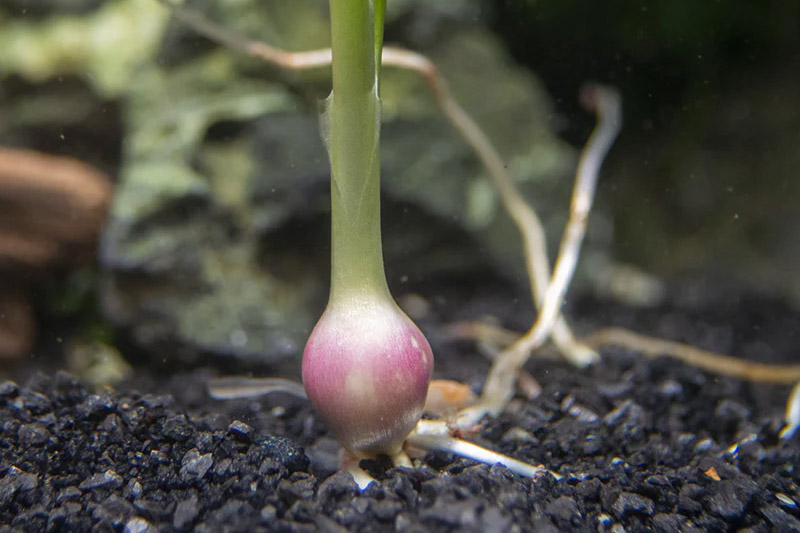How to Grow Onions? if you can drill a hole in the earth, you can grow an onion from a small plant. Most of our onion types are sold as seedlings in bare-root bundles; each plant will begin to grow within days after planting. If you can’t plant your onions straight away, remove their bindings and place them in a bucket filled with 2 inches of damp soil. Keep them cold and bright, but out of direct sunlight, until you’re ready to plant. A bright basement is great.
Quick Guide to Growing Onions
- Once the ground is usable, plant onions in early April. Growing onions in in-ground gardens and raised beds are both wonderful options.
- Onion plants should be spaced 6 inches apart in rows 12 inches apart. Plant them in a sunny location with fertile, well-drained soil that has a pH of 6.0 to 6.8.
- Mix in several inches of aged compost or other rich organic matter to improve your local soil.
- Because onions are poor at absorbing water, it is critical to maintaining the soil moist so that their thin roots may drink. When the top inch of soil becomes dry, water it.
- Keep your developing onions nourished with continuous-release plant food for the greatest results.
- Onions may be consumed in almost any size, so pick them when they’re just the correct size for your next culinary creation.
How to Grow Onions?

1. Planting to Grow Onions
Choose a position that receives full light and is not shadowed by other plants. The more energy they can get from the sun, the bigger their bulbs will grow. Mix aged manure or compost into the soil in the fall or early spring to increase texture. Check for any pebbles or trash. The soil must be loose and well-draining; compacted soil inhibits bulb development.
When to Plant Onions:
- Plant onion sets outside as soon as the ground can be worked in the spring, which is normally in late March or April, when temperatures are no longer anticipated to drop below 28°F (-2°C).
- Start onion seeds for about 6 weeks before transplanting them to the ground (after the soil temperature reaches 50°F).
- A fall-planted onion crop requires at least 4 to 6 weeks of warm weather to establish itself in the ground. During the cool season, the onions go dormant. When the temperatures and soil warm up again in early spring, the onions come back to life.
1. Growing
We think of onions as a leaf crop (like lettuce or kale) rather than a root crop (like beets or carrots). Keeping the foliage healthy ensures that the plants have adequate energy to create huge bulbs.
- Maintain a small mulch layer over immature bulbs to protect them, preserve moisture, inhibit weeds, and promote air circulation.
- Do not cover newly sprouted onions.
- To get huge bulbs, fertilise them with nitrogen every few weeks. When the onions push the dirt away and the bulbing process begins, stop fertilising. Replace the soil around the onions; the bulb must emerge above the earth.
- Onion plants do not require constant watering if light mulch is utilised. One inch of water per square foot per week, including rainwater, is sufficient. Water extra if you want sweeter onions. Water frequently during hot spells to deter bolting.
- Intercrop onions in closely alternating rows with tomatoes or carrots to discourage thrips.
2. Troubleshooting
Tiny black onion thrips, which suck sap from onion leaves, may be attracted to the expanding onion leaves. These are difficult to spot since they lurk in the folds and necks of the leaves. Keep an eye out for aphids as well. Finally, wilting weak plants may be invaded with onion root maggots, the larvae of a common fly. For more information on how to control these pests, contact your local Extension office.
3. Harvest and Storage
If you wish to use young onions as “spring onions” or scallions, you can harvest them just a few weeks after planting. There is no perfect size; simply pull when they are large enough for you. Allow onions to grow and mature for full-sized bulbs. When the bulbs are large and the tops begin to turn yellow and fall over, they are ready to harvest. Pull them up, shake off the soil, and set them out to cure with the tops still on. Any warm, open area is ideal for this; you can even drape them over a fence as long as they aren’t rained on. Bulbs must be kept dry and have adequate air movement.
As the onions cure, the roots shrivel and the necks above the bulbs slowly dry – a natural process that helps to seal the top of the bulb, making the onions less prone to rot. After 7 to 10 days, remove the tops and roots of the onions with pruning shears, remove as much dried soil as possible without removing the papery outer skins, and store your onions in a cool area. Very sweet, juicy onions can be preserved in the fridge, wrapped in newspaper or paper towels.
How to Grow White Onions?

Onions are one of the most popular vegetables grown, but they may also be one of the more difficult crops to properly care for. If you take the time to care for your onions and use common sense when growing them, you will reduce the probability of having crop problems.
There are various methods for making your onion harvest easy and plentiful. The gardener should consider the season, spacing, soil, garden style, and fertiliser. Keep reading to learn everything you need to know to grow and take care of your onions effectively.
1. Planting to Grow White Onions
One of the first and most crucial tasks in growing onions is to plant them at the proper time of year. If you plant them too soon, there is a good danger that early frosts could kill them. On the other side, starting them too late in the year may reduce the number of full-grown plants by the end of the season.
The optimum time to grow onions is often in early spring, though this may vary depending on where you live. Checking the soil is an easy way to assess if it is time to plant your onions. If it is easy to work with, it is time to plant your onions and watch them grow.
2. Properly Spaced
Another key thing to bear in mind while planting white onions is to make sure that each plant is sufficiently distanced from the others. Keeping your white onions correctly spaced can help them grow healthier and faster. If you do not space your white onions properly, you may discover that they do not grow at all.
It is great if you like to space your onions differently, but the guideline is to plant them six inches apart. If you are planting your onions in rows, you must also correctly space the rows. Rows of white onions should be spaced twelve inches apart.
3. Soil
White onions, like most plants, prefer moist soil in which to grow. This does not imply that they prefer soaking wet soil, but rather that it is continuously damp. The following are the simplest ways to ensure that the soil maintains an appropriate moisture level.
White onions have a difficult time pulling up water, so keep the soil moist but not soaking wet. If you keep the soil excessively damp, you will drown your onion plants and kill them.
Water the white onion plants whenever the top layer of soil becomes dry. Simply re-water them until the earth is clearly damp. When the soil is damp, it takes on a darker look, indicating that it has absorbed the water.
Make sure the soil where you placed the white onion plants can drain fast. If you utilise clay-like soil, the ground either does not absorb water or retains it too near to the plant, causing it to decay and slowly drown.
4. Choosing the Best Garden to Grow White Onions
When planting your onions, you’ll want to make sure you’re utilising the proper gardening technique. Planting white onions in the ground and watering them may work, but if you plan ahead of time, your onion crop will be much better.
Building garden beds for your white onions is one of the greatest ways to create a garden space for them. These beds are especially useful if you have clay-like soil that you cannot replace. Your onions will grow better if you make your beds with non-clay soil. (source)
- If raised beds are not a possibility for your white onions, you can still make mounds or raised rows.
- If you have heavy clay soil, this is not an ideal circumstance, but it can be an effective technique to plant your white onions.
- However, if possible, it is always preferable to build raised beds.
5. Use Plant Food On Your Onions
Depending on who you ask, the usage of plant food on onions might be a contentious issue. The use of plant food on onions, or any other type of vegetable, is a matter of personal preference, while studies demonstrate that plant food boosts crop production.
- You do not need to use a lot of plant food for your white onions, but you should feed them on a daily basis.
- Use a dollop of continuous-release plant food if you don’t want to constantly feed your plants.
- This form of plant food will slowly release nutrients, keeping your onions supplied.
6. Try To Improve
If the soil where you grow your white onions is poor, there are some things you can do to help improve it. It is recommended that you do all possible to improve the soil. Otherwise, your onion crop may not thrive.
- Mix in either topsoil or potting soil to enrich the planting conditions for your white onions. Both of these soil types often have higher nitrogen levels. They are also easier to work with since they hold more water and plant nourishment than other soil types.
- Compost is another option to improve your gardening soil. This can be purchased from a store or from someone you know, or it might be compost that you have generated yourself. If you have the ability to make your own compost, you should do so because you will know exactly what is in it.
- If you prefer to grow your white onions in raised beds, you may buy a soil mixture that is specifically created for the beds. This ensures that the soil you use for your onions is ideal and that you can maximise your white onion production.
7. Mulch
Another vital step in growing white onions is to apply mulch to the soil around the plants. If you don’t want to lose your plants to unexpected events like small droughts or frosts, mulch is a must. Mulch is also recommended if you reside in a rainy climate.
The goal of applying mulch on your onion plants is to keep them from drying out too rapidly or from drowning. Mulch will also help keep weeds at bay around your onion plants, saving you time and keeping your plants from competing for nutrients with weeds.
Growing white onions can be tough, but with patience and research, it will become easier. Do not be disheartened if your white onion crops fail at first. Stay patient, follow the instructions, and you’ll soon have a bumper crop of white onions.
How Deep to Plant Onions?

In contrast to onion bulbs or sets, onion seeds are ungrown bulbs, and spreading them creates onion seedlings for transplanting during the current growing season. Learn how to plant onions from seed and how far apart they should be spaced for maximum development.
Fill a seed starting tray with pre-moistened potting soil and scatter onion seeds evenly over the top before the last frost in early spring. Cover them with an eighth-inch layer of dirt. To encourage germination, lightly press the dirt down and place the tray in a warm area with a temperature of 70 to 75°F. When you’re ready to plant the seedlings in the garden, harden them off, take them gently from the container, and space them three to four inches apart in a prepared garden setting.
